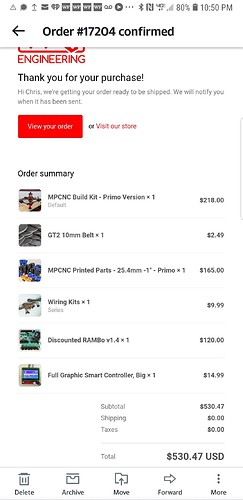Thanks all for replies, and others feel free to continue to chime in if this subject interests you.
KCummins: 3x3 cutting area would be enough, 2x2 also, if 3x3 isn’t rigid enough. Not sure about torque yet but I imagine 60 to 90 psi pushing an 4 oz weight? weight of punch and cylindar is likely far less than a router
Jeffeb3:The holes are as small, like ball point pen tip small, so drag knife is no good, but I would love a sonic drag knife for cutting out patterns if anyone knows of such modules. Or maybe solutions to hold soft goods while cutting to keep them from moving.
I wonder what parts have backlash (slippage and movement when upward force is applied?) And if these parts can be secured. I see there are bearings all around the pipes, can they be adjusted to reduce movement or is position fixed?
I would like to know more about what parts backlash if anyone has experience with this.
I’m starting to formulate some ideas based on everyone’s insight. Since I have 0 experience with cnc I’m having to imagine what is possible and use you guys to correct my assumptions. So please continue jump in with more wisdom if something I imagine doesn’t jive, and thank you for your time and patience.
1st: the weakest link
I used to skateboard, so I am well aware of what a bearing can take.
My experience with hole punches makes me think the printed parts can handle the striking.
I imagine if screws start coming loose i can use thread lock
what I need to know is what that force will do to the pipe or conduit, how punch will affect pipe near the joints vs the center.
I may have to buy a cylinder and rig it to some piping at diff locations to see what will happen. This will also give me some input on psi force necessary for cutting.
I wonder if anyone has ever wiggled the pipes or accidentally pushed the z down hard with router turned off and seen the pipes bend. This experience would also give me insight into backlash, where it happens and how much movement there is.
What pipe would be the most rigid?
I think 2 ft sq cutting area would be plenty so that might help keep things rigid.
2nd: frame for z axis
Mpcnc seems to be the best option since it is not fully reliant on gravity, but as you guys pointed out, z axis seems to be a week point.
Can I avoid the z axis all together?
What if I mount to the frame that holds the z axis. I think the stroke of the cylinder doesn’t need to fully extend, which means I can position it to stroke past my cutting board and the impact would stop it so I would not need a z adjustment. This would let me have a knife and hole punch at the same time! I could program it to punch all the holes then cut it out!
Stroking past the cutting board could also help with possible issues if pipe moves more when punching in center of cutting area vs near the ends. If the pipe flexes, lets say 1 or 2 mm in center and less near end then stroking 4 or 5 mm past cutting board will keep the flex from making weaker punches that dont cut through in the middle. Perhaps more would be needed for slippage from other parts of machine?
Can anyone push up on their mpcnc z axis housing to give me an idea of how much play and how much force was needed to get to the play?
Thanks if you read all that XD

